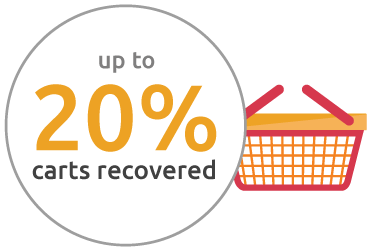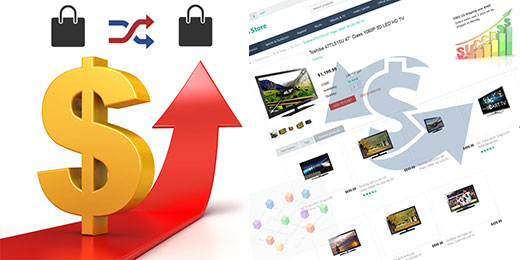CS-Cart: Simple Strategies for Decreasing Shopping Cart Abandonment


Customers actually do a lot of window shopping online. The main difference between online and traditional window shopping is that customers are more apt to toss items into a virtual shopping cart and then abandon them. Little do you know there are ways to reinforce their purchase before they choose to abandon a full cart.
The average shopping cart abandonment rate is 67.45%. That number is incredibly hard to ignore. If we explore further though, we can identify some very specific reasons why customers are running off, leaving their virtual carts in the dust.
Shopping cart abandonment remains a major ecommerce concern. To help manage this problem, here are tips to help significantly lower shopping cart abandonment:
Be up front about prices, keep hidden fees and restrictions out of the equation
About 41% of customers abandon their shopping cart because hidden fees crop up after they move on to the online checkout process. Additionally, 44% of customers abandon their shopping cart because of high shipping rates.
The best way to eliminate any hidden fees is to add a sales tax calculator to the actual shopping cart. A lot of e-tailers only offer a similar calculator after checkout, which can certainly scare off potential customers. If you do it up front, then people know what to expect.
Not only do you need to be up front about your prices and fees, but you also need to be reasonable when it comes to shipping items. What exactly is reasonable, you ask? 73% of surveyed individuals mentioned that free shipping is absolutely necessary when it comes to making an online purchase. It’s a better plan to offer a wide variety of shipping options, the free variant being one of them.
Offer multiple payment options, try not to restrict customers to a particular payment method
Borrow elements from the big names in the business like Wal-Mart, and offer as much convenience to your customers as possible during checkout. Don’t force them to open a proprietary credit line because their preferred form of payment is not accepted by you.
Third-party online payment providers are a huge deal for online shopping, you should offer support for services like PayPal and Google Wallet. A lot of them even offer one-click checkout options for existing customers. This reinforces the ease of payment, and makes impulse purchases more likely to happen.
Wal-Mart now allows customers to pay for transactions using a checking account. Sure it’s pretty unique and in some cases extreme, but customers never have a reason to walk away when it comes to limited payment options. That’s exactly the same convenience that you want to offer to your own customers.
Offer product comparisons, allows customers to verify they are making the right purchase
You may offer the cheapest prices, but how many businesses do you know that claim such a thing? To be honest, I don’t know a single brand that doesn’t say they’re the cheapest or the best in some witty form or another.
37% of customers abandon their shopping cart because they wanted to comparison shop. That information should certainly offer some food for thought.
Allow direct feature comparisons of various products and brands, and also offer clear price comparisons. This affords customers nearly everything they need to make an informed decision, and it also helps reinforce their goals. They’re more likely to go through with a purchase if they’re sure the product they’ve selected offers the best possible features and value.
Offer exclusive deals, highlight coupons, deals and more to make customers want to shop online
What do you do when you want customers to visit a brick-and-mortar store? You offer exclusive deals, coupons and promotions designed to encourage them to visit a retail location. The same holds true for online websites and e-tailers.
Offer exclusive deals to online customers, and display them right in the open for everyone to see, 62% of online shoppers believe it’s vital for e-commerce portals to offer deal sections and online promotions. Give your customers a reason to make an online purchase, instead of going to visit to a local store.
Furthermore, highlighting the deals and offering a specific section for promotions is very important too. If customers cannot find the special offers, how are they supposed to take advantage of them? It’s even a great idea to implement some type of function that shows off deals for similar items during checkout. One item might end up being a bit too pricy for a customer, but if a similar deal is available they will be more likely to follow through with a purchase instead of backing out entirely.
Don’t require registration, allow customers to register for a proprietary account after a purchase
Think long and hard about just how many proprietary accounts and passwords you have across multiple web portals. It’s a bit ridiculous that nearly every site on the web requires you to register or sign-up for a native account, 29% of online customers dislike being presented with a registration form during the checkout process.
A great way to handle this is to prompt them to register for an account after they’ve already made the purchase. If you still need some kind of identifier to track customer activity and purchases, you can require an email address instead of a proprietary account. Several companies like Wal-Mart use the latter method, and when a user eventually does register they can import all activity thanks to the associated email address.
source: retargeter.com
Share
Article related products
Categories
Recent articles
Archives
You may be interested in



